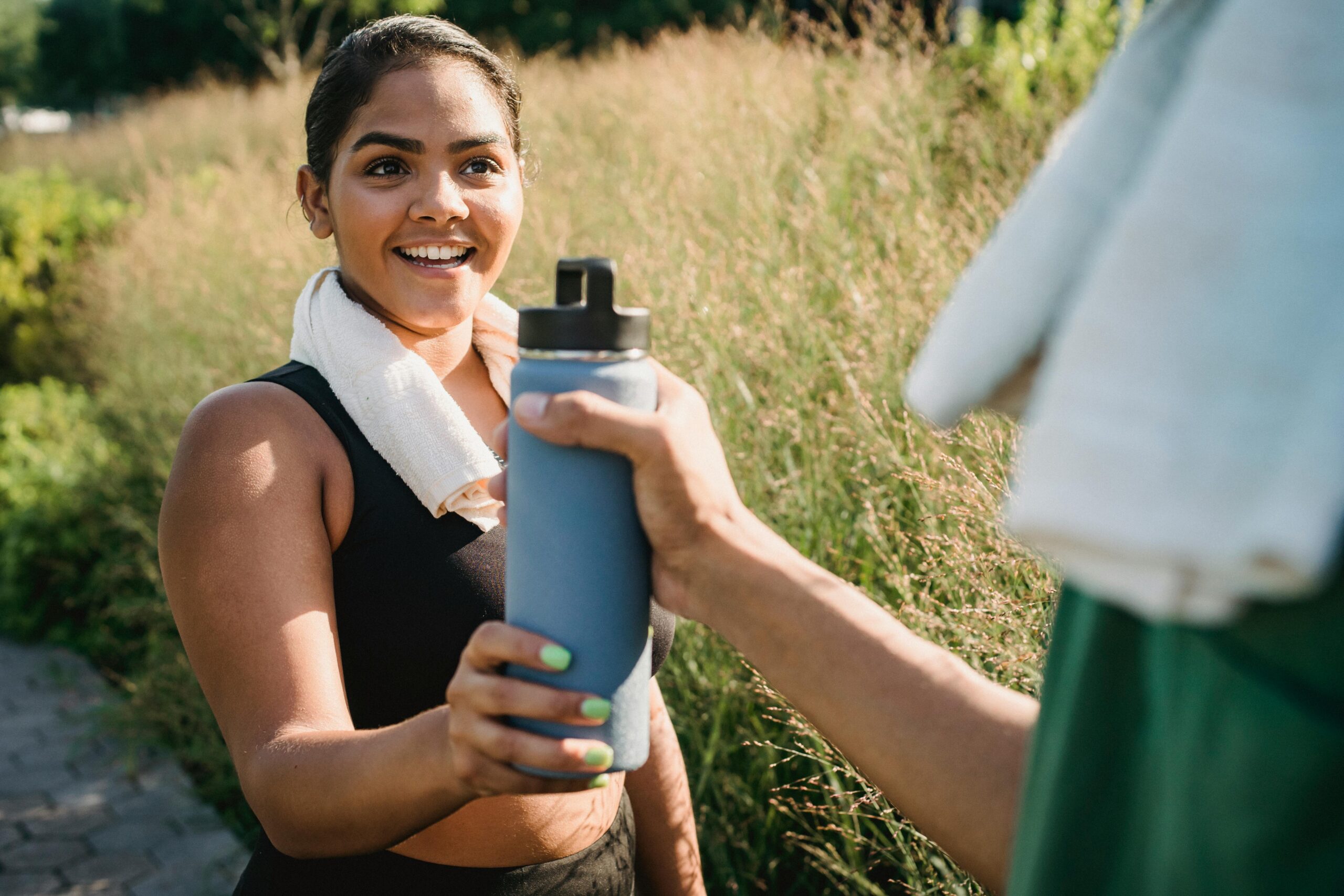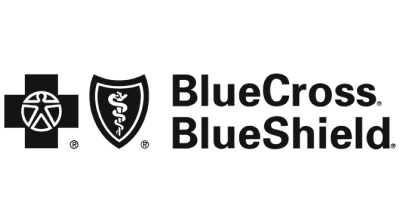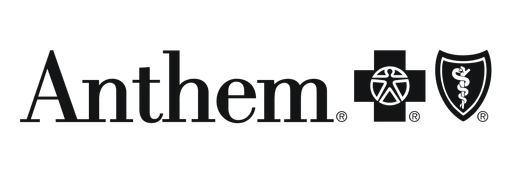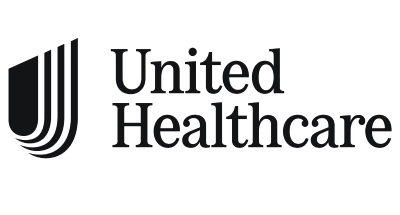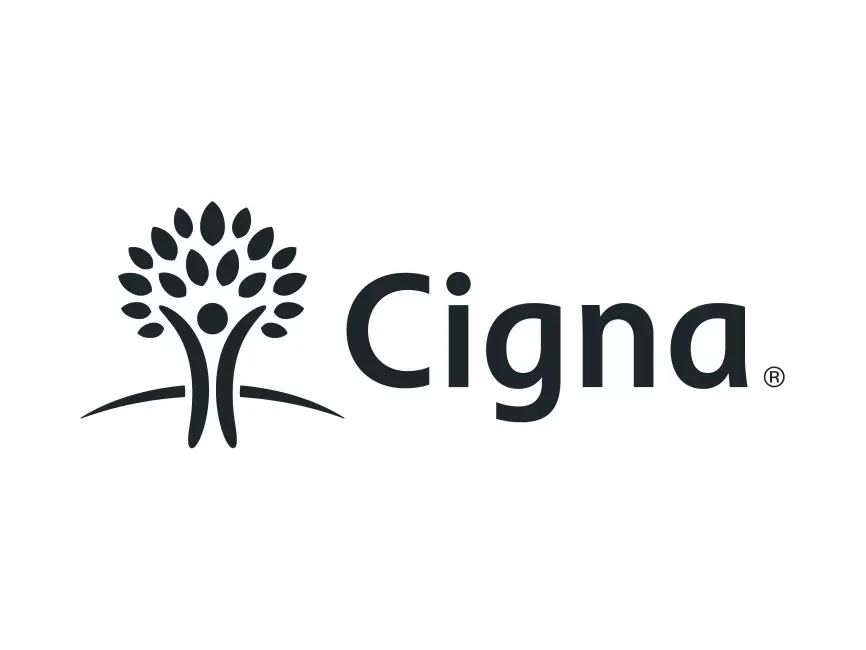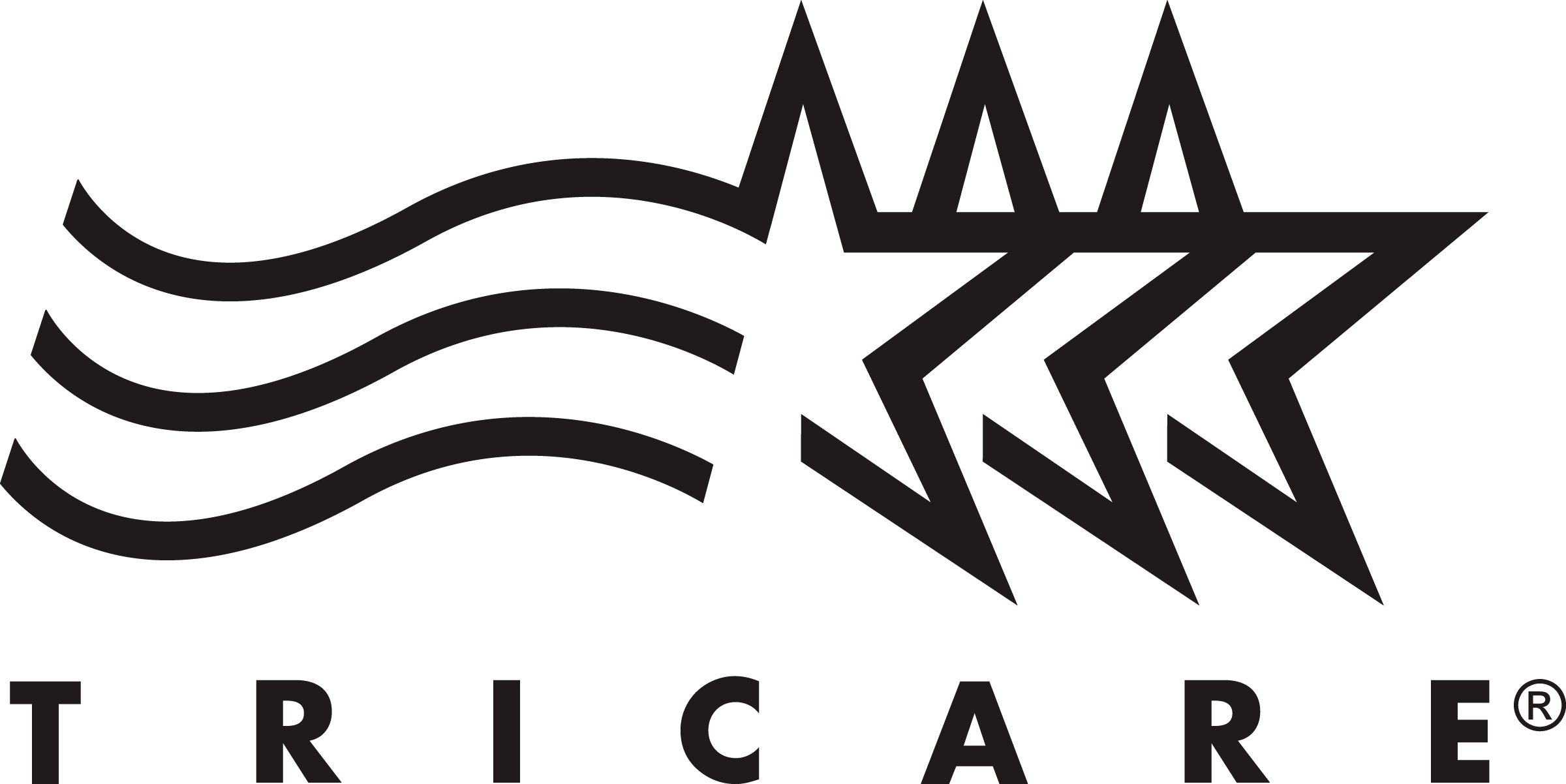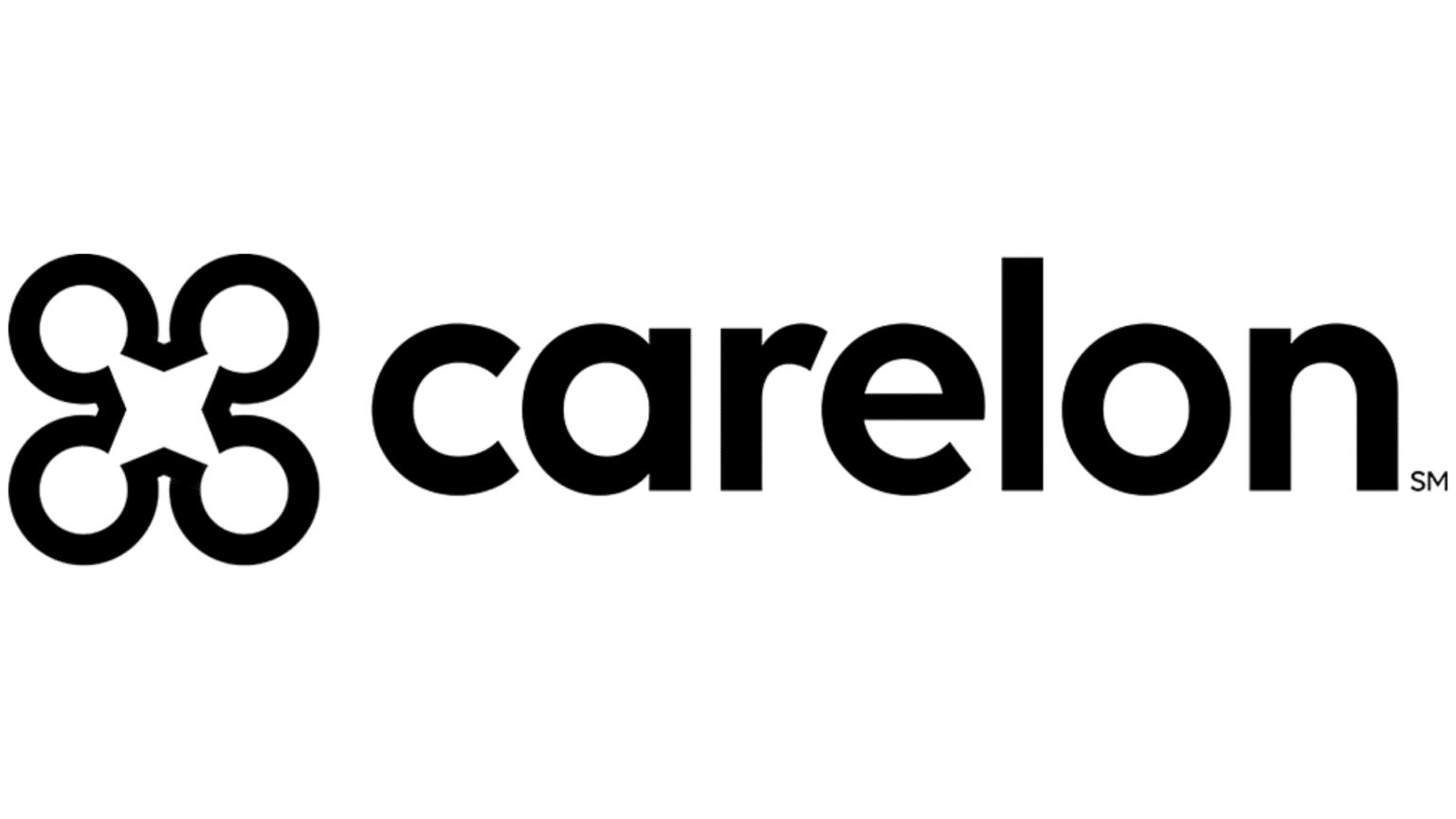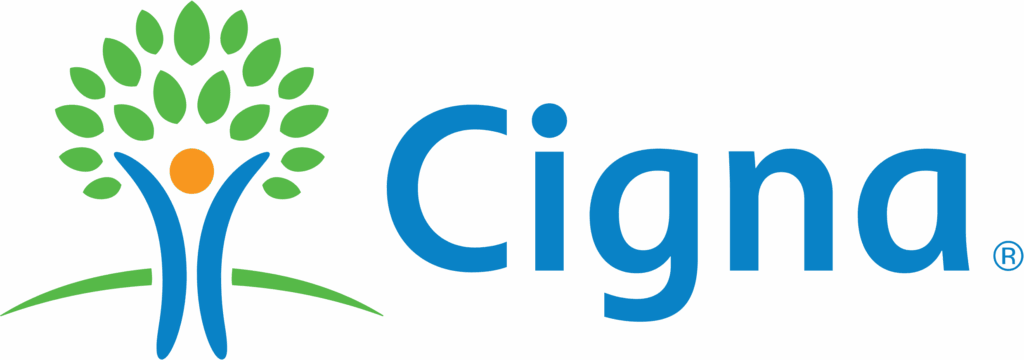Understanding Cravings: What They Are and Why They Happen
Before diving into coping strategies, it’s helpful to understand what cravings actually are. A craving isn’t just a fleeting thought about using; it’s a powerful, often visceral urge that can dominate your thoughts and feelings. It can manifest physically, perhaps as a knot in your stomach, a racing heart, or a specific taste or smell sensation associated with past use. Psychologically, it can involve intense thoughts, memories, and emotions linked to the substance. Understanding that cravings have both physical and psychological roots can help demystify them and make them feel less intimidating. They are essentially the brain’s conditioned response, signalling a desire for the substance it has come to depend on for reward or relief.
The brain’s reward pathway plays a significant role. Substances like drugs and alcohol hijack this system, flooding it with dopamine and creating intense feelings of pleasure or euphoria. Over time, the brain adapts, requiring the substance not just to feel good, but often just to feel “normal.” When you stop using, the brain takes time to readjust. Cravings are part of this readjustment process—the brain sending out strong signals for the substance it misses. Furthermore, addiction rewires neural pathways, creating strong associations between certain cues and substance use. These cues act as triggers. Common triggers for cravings are incredibly varied and personal, but often fall into several categories:
- Environmental Triggers: These include people, places, or things associated with past substance use. Seeing old using buddies, visiting a location where you used to drink or use drugs, or even encountering specific objects can spark a craving.
- Emotional Triggers: Feelings are powerful triggers. Stress, anxiety, sadness, anger, boredom, loneliness, and even positive emotions like excitement or celebration can lead to cravings as the brain remembers using substances to cope with or enhance these feelings.
- Physiological Triggers: Physical states can also trigger cravings. Withdrawal symptoms, fatigue, hunger (think HALT: Hungry, Angry, Lonely, Tired), or even physical pain might create an urge to use for relief.
- Cognitive Triggers: Thoughts and memories can be potent triggers. Thinking about past good times associated with use, romanticizing the effects, or dwelling on stressful situations can all initiate a craving.
Recognizing that cravings are a biological and psychological response, often triggered by specific internal or external cues, is the first step towards managing them. They don’t mean you’re failing in recovery; they mean your brain is healing. Understanding your personal triggers is key to developing effective coping strategies. This understanding is something often explored in depth within treatment programs, including flexible options like our
Virtual IOP Program, where you can learn to identify and manage these triggers with professional guidance. Knowing why cravings happen makes it easier to apply the techniques needed to overcome them.
Technique 1: Harnessing the Power of Mindfulness and Meditation
In the heat of a craving, it can feel like the urge will last forever, demanding immediate action. Mindfulness offers a powerful counter-approach: learning to sit with discomfort without reacting impulsively. Mindfulness simply means paying attention to the present moment—your thoughts, feelings, bodily sensations, and surrounding environment—with curiosity and without judgment. It’s about observing what’s happening right now, rather than getting swept away by thoughts of the past or worries about the future. Meditation is a common practice used to cultivate mindfulness. It involves setting aside time to focus your attention, often on your breath, a mantra, or bodily sensations, gently bringing your focus back whenever your mind wanders.
How does this help with cravings? Mindfulness teaches you to recognize a craving when it arises, perhaps noticing the physical sensations or the intrusive thoughts, but without immediately identifying with them or feeling compelled to act. Instead of fighting the craving or giving in, you observe it like a wave rising, cresting, and eventually falling. You acknowledge its presence (“Ah, there is a craving”) without judgment (“This is bad,” “I’m weak”). This creates mental space between the urge and your response, allowing the intensity to dissipate naturally. Studies have shown that mindfulness practices can actually change brain structures related to self-control and emotional regulation, making it easier to manage impulsive behaviors like substance use.
Getting started with mindfulness and meditation doesn’t require hours of silent sitting. You can begin with just a few minutes each day:
- Find a Quiet Space: Sit or lie down comfortably where you won’t be disturbed.
- Focus on Your Breath: Close your eyes gently or soften your gaze. Bring your attention to the sensation of your breath entering and leaving your body. Notice the rise and fall of your chest or abdomen.
- Acknowledge Wandering Thoughts: Your mind will wander. That’s normal. When you notice thoughts, feelings, or sensations pulling your attention away, gently acknowledge them without judgment and then redirect your focus back to your breath.
- Practice Non-Judgment: Treat whatever arises—thoughts, emotions, cravings—with gentle curiosity. You don’t need to analyze or fix anything, just observe.
- Start Small: Begin with 3-5 minutes daily and gradually increase the duration as you feel comfortable. There are many guided meditation apps and online resources that can help.
Practicing mindfulness regularly builds your capacity to stay present and composed, even when faced with strong urges. It helps you realize that cravings, like all thoughts and feelings, are temporary. They will pass. This technique is often integrated into comprehensive treatment plans, including
Mental Health Treatment components of addiction recovery, recognizing the deep connection between mental well-being and sobriety. By learning to observe cravings without reacting, you reclaim your power over them. If you’re interested in learning more about incorporating mindfulness into your recovery, our team at Compassion Recovery Center can provide guidance through our telehealth services.
Technique 2: Changing Thoughts and Behaviors with Cognitive Behavioral Therapy (CBT)
Cognitive Behavioral Therapy, or CBT, is one of the most well-researched and effective psychotherapies used in addiction recovery. Its core principle is that our thoughts, feelings, and behaviors are interconnected, and that by changing negative or unhelpful thought patterns, we can change our feelings and behaviors. In the context of addiction, CBT helps individuals identify the thoughts and situations that trigger cravings and substance use, and then develop healthier coping mechanisms. It’s not about ignoring problems, but about learning to respond to them in a more constructive way.
CBT equips you with practical skills to manage cravings head-on. Some key techniques used within CBT for coping with cravings include:
- Identifying Trigger Situations and Automatic Thoughts: Working with a therapist, you learn to recognize the specific people, places, feelings, or thoughts that consistently precede a craving or urge to use. You also identify the “automatic thoughts” that pop into your head in these situations (e.g., “I can’t handle this without a drink,” “Just one won’t hurt,” “This feeling is unbearable”).
- Challenging Distorted Thinking: CBT teaches you to examine these automatic thoughts critically. Are they truly accurate? Are there alternative ways to view the situation? For instance, challenging “I can’t handle this stress” might involve recalling times you did cope without substances or brainstorming alternative stress-reduction techniques. This process, often called cognitive restructuring, helps weaken the link between triggers and substance use.
- Developing Coping Skills: Once triggers and unhelpful thoughts are identified, CBT focuses on building a toolkit of practical coping strategies. This might involve problem-solving skills for stressful situations, assertiveness training to handle social pressure, relaxation techniques to manage anxiety, or specific plans for navigating high-risk situations.
- Behavioral Experiments: Sometimes, a therapist might encourage you to test your assumptions. For example, if you believe you can’t socialize without alcohol, you might plan a short, sober outing to gather evidence challenging that belief.
- Relapse Prevention Planning: CBT plays a crucial role in developing a personalized relapse prevention plan, anticipating potential challenges and outlining specific strategies to manage cravings and high-risk situations effectively.
One of the significant advantages today is the accessibility of
online CBT therapy. Through telehealth platforms, like those used by Compassion Recovery Center, individuals can receive high-quality CBT from licensed therapists without needing to travel to an office. This is particularly beneficial for those with busy schedules, transportation challenges, or who prefer the privacy and comfort of their own home. Virtual CBT sessions offer the same evidence-based techniques and therapist interaction as in-person sessions, making effective addiction recovery techniques more accessible than ever, especially for residents seeking an
Orange County IOP or other remote services. This approach is also fundamental in
Dual Diagnosis Treatment, addressing co-occurring mental health conditions alongside addiction. Learning to change the way you think about cravings and triggers through CBT can fundamentally shift your relationship with them, empowering you to choose recovery day by day.
Technique 3: Moving Your Body to Move Past Cravings
Never underestimate the power of physical activity when it comes to managing cravings and supporting overall recovery. Engaging in exercise offers a wealth of benefits that directly counteract many of the factors contributing to substance use urges. When you feel a craving coming on, lacing up your shoes and getting moving can be one of the most effective immediate responses. Staying physically active is not just about physical health; it’s a crucial component of mental and emotional well-being, particularly during the challenges of addiction recovery.
Why is exercise so effective?
- Endorphin Release: Physical activity stimulates the release of endorphins, which are natural mood lifters and pain relievers produced by the brain. This “runner’s high” effect can provide a natural mood boost, reducing feelings of depression, anxiety, and stress—common triggers for cravings.
- Stress Reduction: Exercise is a fantastic stress buster. It helps regulate cortisol levels (the stress hormone) and provides a healthy outlet for pent-up tension and frustration, which might otherwise lead someone to seek relief through substances.
- Improved Sleep: Regular physical activity can significantly improve sleep quality. Poor sleep is often linked to increased cravings and relapse risk, so establishing a healthy sleep routine aided by exercise is highly beneficial.
- Distraction: Simply engaging in physical activity shifts your focus away from the craving. Concentrating on your movements, your breathing, or your surroundings provides a healthy and productive distraction until the urge subsides.
- Increased Self-Esteem: Achieving fitness goals, no matter how small, can boost self-confidence and provide a sense of accomplishment, reinforcing positive self-image and commitment to a healthy lifestyle.
- Brain Health: Exercise promotes neuroplasticity, the brain’s ability to form new connections and heal, which is vital during recovery from addiction.
The great news is that you don’t need to become a marathon runner or bodybuilder to reap the benefits. Any form of physical activity that gets your body moving can help. Consider incorporating different types of exercises into your routine:
- Aerobic Exercise: Activities like brisk walking, jogging, swimming, cycling, or dancing get your heart rate up and are excellent for mood elevation and stress reduction. Even a 15-20 minute walk can make a difference when a craving hits.
- Strength Training: Lifting weights, using resistance bands, or doing bodyweight exercises (like push-ups or squats) builds muscle and boosts metabolism, also contributing to improved mood and self-esteem.
- Mind-Body Practices: Yoga, Tai Chi, and Qigong combine physical movement with mindfulness and breathwork, offering benefits for both physical tension and mental calm. These can be particularly helpful in managing anxiety-related cravings.
- Team Sports or Group Activities: Joining a sports team, hiking group, or fitness class adds a social element, combining physical activity with building a supportive network (more on that next).
Incorporating physical activity for addiction recovery is a key strategy supported in many treatment programs, including remote ones. Even within a
virtual rehab California setting, developing a consistent exercise routine is encouraged as part of a holistic approach to wellness. Find activities you genuinely enjoy, as this increases the likelihood you’ll stick with them. Start gradually, listen to your body, and celebrate the positive impact movement has on both your physical health and your ability to cope with cravings. If you need guidance on incorporating exercise safely into your recovery,
reach out today to discuss how our programs support overall wellness.
Technique 4: The Strength of Connection – Building Your Support System
Recovery from addiction is rarely a journey taken alone. Having a strong support system is not just helpful; it’s often considered fundamental to sustained sobriety. Cravings can feel isolating, making you believe you’re the only one struggling this intensely. Connecting with others who understand, offer encouragement, and hold you accountable can make all the difference in navigating these difficult moments. A robust support system provides emotional comfort, practical advice, and a crucial reminder that you are not alone in your fight.
What does a strong support system in recovery look like? It can include various people and resources:
- Family and Friends: Supportive loved ones who understand your commitment to recovery can offer encouragement, a listening ear, and help you avoid triggering situations. Open communication about your needs and boundaries is key.
- Therapists and Counselors: Professionals provide guidance, evidence-based coping strategies (like CBT), and a safe space to process challenges, including cravings. Regular therapy sessions are a cornerstone of many recovery plans.
- Support Groups: Groups like Alcoholics Anonymous (AA), Narcotics Anonymous (NA), SMART Recovery, or other peer support groups offer invaluable connection with others who have shared experiences. Hearing how others cope with cravings and sharing your own struggles can be incredibly validating and empowering.
- Sponsors: In 12-step programs, a sponsor is an experienced member who provides personal guidance and support, often available for calls when cravings or difficult situations arise.
- Recovery Communities: Engaging with sober living environments, alumni programs, or other recovery-focused communities provides ongoing peer support and accountability.
Building and maintaining this network takes effort, especially early in recovery. Here are some steps you can take:
- Be Honest: Communicate openly with trusted family and friends about your recovery journey and how they can best support you.
- Attend Meetings: Regularly participate in support group meetings, whether in-person or virtual. Don’t be afraid to share and connect with others.
- Seek Professional Help: Engage actively in therapy. Your therapist is a crucial part of your support system. Explore options like our Intensive Outpatient Program (IOP) which integrates therapy and group support.
- Set Boundaries: Protect your recovery by setting clear boundaries with individuals or situations that might trigger cravings or undermine your sobriety.
- Offer Support to Others: Helping others in recovery can strengthen your own commitment and provide a sense of purpose.
- Utilize Technology: Embrace virtual support options.
The rise of
telehealth addiction treatment has significantly expanded access to support systems. Compassion Recovery Center, for instance, offers virtual group therapy sessions, individual counseling, and family support, all accessible remotely. This means that even if you face barriers like distance, transportation, or social anxiety, you can still build a strong, supportive network. Virtual support groups connect you with peers across Orange County and beyond, fostering a sense of community and shared experience crucial for combating the isolation that can accompany cravings. Don’t underestimate the power of connection. Building your support system is an active, ongoing process that provides the resilience needed to navigate cravings and sustain long-term recovery. If you’re ready to build your network, consider our
Admissions Information page to see how our programs facilitate connection.
Technique 5: Identifying and Avoiding Your Triggers
One of the most proactive strategies for coping with cravings is to understand and manage your personal triggers. As discussed earlier, triggers are the specific internal or external cues that spark the desire to use substances. While it might be impossible to avoid all triggers forever, identifying them allows you to develop conscious strategies to either steer clear of them or prepare yourself to cope effectively when exposure is unavoidable. This requires self-awareness and honesty, often developed through reflection and therapeutic work.
Identifying personal triggers is a crucial first step. Think about the times you’ve experienced strong cravings or relapsed in the past. What was happening just before?
- Who were you with? (Certain friends, family members, colleagues?)
- Where were you? (Specific bars, neighborhoods, rooms in your house?)
- What were you feeling? (Stressed, bored, lonely, angry, anxious, happy?) Remember HALT: Hungry, Angry, Lonely, Tired.
- What were you thinking about? (Past use, relationship problems, work stress?)
- What time of day was it? (Evenings, weekends?)
- What objects were present? (Paraphernalia, specific types of media, advertisements?)
Keeping a journal can be helpful in tracking patterns and identifying recurring triggers. Once you have a clearer picture of your high-risk situations, you can develop strategies to avoid or manage exposure:
- Avoidance (Where Possible): This is often the best strategy, especially early in recovery. If certain people consistently trigger you, limit contact. If a particular route home passes a bar where you used to drink, find a different route. Delete dealers’ numbers. Avoid places heavily associated with past use. This isn’t about hiding, but about protecting your sobriety while you build stronger coping skills.
- Modifying Your Environment: Remove any substances or paraphernalia from your home and workplace. Unsubscribe from marketing emails related to alcohol. Change your social media feeds to avoid triggering content (relevant to Social Media Addiction Treatment awareness).
- Planning Ahead: If you know you’ll be facing a potentially triggering situation (like a holiday party or stressful meeting), have a plan. This might include bringing a sober friend, having an exit strategy, preparing responses if offered substances, keeping a supportive person on speed dial, or planning a recovery meeting afterwards.
- Developing Coping Statements: Prepare affirmations or coping statements to remind yourself of your commitment to recovery when faced with a trigger (e.g., “This craving will pass,” “My sobriety is more important,” “I can handle this without using”).
- Using Delay Tactics: When a trigger leads to a craving, commit to waiting it out for a set period (e.g., 15-30 minutes) before even considering acting on it. Often, the urge will lessen or pass within that time.
Telehealth addiction treatment plays a significant role in helping individuals manage triggers effectively. Through virtual therapy sessions, you can work with a therapist to identify your specific triggers and develop personalized avoidance and management strategies tailored to your life circumstances. Programs like our
Virtual IOP Program provide the structure and support needed to practice these skills in your real-world environment. Being able to access support from home means you can address triggers as they arise in your daily life, reinforcing coping skills in the moment. Managing triggers is an ongoing process of learning and adaptation, a vital skill in maintaining sobriety and successfully coping with cravings. Understanding your triggers empowers you to take control rather than letting them dictate your actions. You can
start your free assessment to begin identifying your triggers with professional support.
Technique 6: Finding Flow with Healthy Distractions
When a craving hits, it can feel all-consuming, narrowing your focus entirely onto the urge to use. One effective way to break this hyper-focus is through healthy distraction. This isn’t about suppressing the craving or pretending it doesn’t exist, but rather about consciously redirecting your attention towards something positive, engaging, or simply different until the intensity of the craving subsides. Finding healthy distractions is a key skill in your recovery toolkit, offering an immediate action you can take when urges feel overwhelming.
The importance of healthy distractions cannot be overstated. Substituting substance use with other potentially harmful behaviors (like excessive gambling, shopping, or unhealthy eating) isn’t a solution. The goal is to engage in activities that genuinely nourish your well-being, occupy your mind constructively, and align with your recovery goals. Effective distractions often engage your senses, require some level of focus, or provide a sense of enjoyment or accomplishment.
Here are some examples of healthy activities that can distract you from cravings:
- Engage Your Mind: Read a book or magazine, do a crossword puzzle or Sudoku, learn a new language or skill online, watch an engaging documentary, listen to a podcast, or play a musical instrument.
- Get Creative: Draw, paint, write in a journal, try photography, cook or bake something new, engage in crafting, or work on a DIY project.
- Connect with Others: Call a supportive friend or family member (not someone associated with past use), talk to your sponsor, attend a virtual or in-person support meeting, or volunteer your time.
- Move Your Body: As discussed earlier, physical activity is a powerful distraction. Go for a walk or run, do some stretching or yoga, dance to music, or do some quick exercises at home.
- Engage Your Senses: Take a hot bath or shower, listen to calming or uplifting music, practice mindfulness or deep breathing, light a scented candle, or spend time in nature focusing on the sights, sounds, and smells around you.
- Be Productive (in moderation): Tackle a small task you’ve been putting off, organize a drawer or closet, do some light cleaning, or plan your schedule for the next day. Accomplishing something can shift your focus and boost your mood.
It’s helpful to create a list of potential distractions before a craving hits, so you have ideas ready when you need them most. Keep this list handy—on your phone, on the fridge, or in your wallet. The key is to act quickly when a craving starts, choosing an activity from your list and immersing yourself in it for at least 15-30 minutes.
Virtual rehab programs, such as the
Partial Hospitalization Program (PHP) or IOP offered by Compassion Recovery Center, can provide structure and support in developing healthy routines and incorporating these types of activities into your daily life. Therapy sessions often involve brainstorming and planning healthy distractions, while group sessions provide accountability and shared ideas. Telehealth makes it possible to integrate these strategies seamlessly into your home environment, helping you build a life rich with fulfilling activities that naturally crowd out the space cravings used to occupy. Finding joy and engagement in healthy pursuits is not just about distraction; it’s about building a meaningful life in recovery.
Technique 7: Exploring Medication-Assisted Treatment (MAT)
For many individuals, especially those recovering from opioid or alcohol addiction, Medication-Assisted Treatment (MAT) can be a critical component of managing cravings and supporting long-term recovery. MAT combines the use of FDA-approved medications with counseling and behavioral therapies to treat substance use disorders. It’s important to understand that MAT is not simply substituting one drug for another; rather, it’s a comprehensive, evidence-based approach that addresses the biological aspects of addiction, making it easier for individuals to engage in therapy and rebuild their lives. MAT has been shown to reduce illicit drug use, decrease overdose deaths, improve treatment retention, and enhance overall functioning.
How does MAT work to combat cravings? The medications used in MAT work in different ways depending on the substance use disorder being treated:
- Opioid Use Disorder (OUD): Medications like buprenorphine (Suboxone, Sublocade) and naltrexone (Vivitrol) work on the brain’s opioid receptors. Buprenorphine partially activates these receptors, reducing withdrawal symptoms and cravings without producing the same intense high as heroin or fentanyl. Naltrexone blocks the effects of opioids, meaning if someone uses opioids while on naltrexone, they won’t feel the euphoric effects, which can reduce motivation to use. Methadone, typically provided in specialized clinics, also activates opioid receptors to prevent withdrawal and cravings.
- Alcohol Use Disorder (AUD): Medications like naltrexone (oral or injectable Vivitrol), acamprosate (Campral), and disulfiram (Antabuse) can help manage alcohol cravings and discourage drinking. Naltrexone reduces the rewarding effects of alcohol and cravings. Acamprosate helps normalize brain systems disrupted by chronic drinking, reducing protracted withdrawal symptoms like anxiety and insomnia that can trigger relapse. Disulfiram creates an unpleasant physical reaction (like nausea and flushing) if alcohol is consumed, acting as a deterrent.
These medications help stabilize brain chemistry, relieve physiological cravings, and block the euphoric effects of substances. This stabilization allows individuals to focus more effectively on the psychological and behavioral aspects of recovery addressed in counseling and therapy. MAT provides a foundation upon which other coping skills can be built.
Accessing MAT has become increasingly convenient with the expansion of telehealth services. Many aspects of MAT, including initial consultations, prescribing certain medications (like buprenorphine and naltrexone), and ongoing monitoring and counseling, can often be managed effectively online. This improved access to
MAT treatment online is particularly beneficial for individuals in areas like Orange County who might face transportation barriers or prefer the privacy of remote care. Compassion Recovery Center integrates MAT into its treatment plans when clinically appropriate, ensuring clients have access to this valuable tool as part of our comprehensive
Drug Rehab Programs and
Alcohol Rehab Programs. It’s crucial to discuss with a healthcare professional whether MAT is a suitable option for your specific situation, considering your substance use history, medical conditions, and recovery goals. You can
verify your insurance online to see if MAT services might be covered under your plan. MAT, when combined with therapy and support, offers a powerful strategy for coping with persistent cravings and achieving sustained recovery.
Building Your Toolkit for Lasting Recovery
Navigating the path of recovery inevitably involves confronting cravings. These intense urges are a normal part of the brain’s healing process, but they don’t have to derail your progress. As we’ve explored, there is a wealth of effective techniques available to help you manage these challenging moments and stay firmly committed to your sobriety. From the grounding presence cultivated through mindfulness and meditation to the practical thought-reframing skills learned in Cognitive Behavioral Therapy (CBT), you have internal resources you can strengthen. Engaging in physical activity provides a powerful outlet and mood boost, while intentionally building a robust support system reminds you that you are never truly alone in this journey. Proactively identifying and managing your personal triggers empowers you to navigate high-risk situations, and having a list of healthy distractions ready can redirect your focus when urges feel overwhelming. For some, Medication-Assisted Treatment (MAT) provides essential physiological support, reducing the intensity of cravings and withdrawal.
Mastering these seven techniques—Mindfulness, CBT, Physical Activity, Support Systems, Trigger Management, Healthy Distractions, and MAT (where appropriate)—provides you with a comprehensive toolkit for coping with cravings. It’s important to remember that recovery isn’t about finding one magic bullet, but about learning which combination of tools works best for you in different situations. Some days, a short walk might be enough; other times, you might need to reach out to your support network or use a specific CBT technique. Be patient and compassionate with yourself as you learn and practice these skills. Setbacks can happen, but they don’t represent failure; they are opportunities to learn and reinforce your strategies.
Most importantly, you don’t have to figure this all out on your own. Professional help is invaluable in developing and implementing these coping strategies effectively. At Compassion Recovery Center, we specialize in providing compassionate, expert care through flexible
telehealth addiction treatment options. Our remote services, including Virtual IOP, PHP, and Outpatient Detox, are designed to meet the needs of individuals throughout California, with a strong focus on serving the Orange County community. We offer personalized treatment plans that incorporate evidence-based therapies like CBT, support for building healthy habits, access to virtual support groups, and coordination of MAT when needed. Our goal is to make high-quality addiction treatment accessible, convenient, and effective, allowing you to build a strong foundation for lasting recovery from the comfort of your own environment. If you or a loved one is struggling with substance use and the challenge of cravings, we encourage you to take the next step.
Contact Us for a confidential discussion about your situation, or
check insurance coverage easily online. You can also
start your free assessment today. Remember, coping with cravings is possible, and a fulfilling life in recovery is within reach. Let us help you build the toolkit you need to succeed.
What are 10 ways you can cope with cravings?
Effective ways to cope with cravings include: 1. Practicing mindfulness/meditation to observe urges without reacting. 2. Using Cognitive Behavioral Therapy (CBT) techniques to challenge craving-related thoughts. 3. Engaging in physical activity to boost mood and reduce stress. 4. Reaching out to your support system (friends, family, sponsor, therapist, support groups). 5. Identifying and avoiding or managing triggers. 6. Distracting yourself with a healthy activity or hobby. 7. Utilizing delay tactics (“urge surfing” or waiting it out). 8. Practicing deep breathing or relaxation exercises. 9. Reminding yourself of the negative consequences of using and the benefits of sobriety (using a pros and cons list). 10. Considering Medication-Assisted Treatment (MAT) if appropriate for your situation, under medical guidance.
Why are coping skills for stress and cravings important?
Coping skills for stress and cravings are crucial because stress is a major trigger for substance use urges and relapse. Addiction often begins or is maintained as a way to cope with stress, pain, or difficult emotions. In recovery, individuals need healthy, constructive ways to manage stress and navigate cravings without resorting to substances. Developing these skills builds resilience, reduces the risk of relapse, improves emotional regulation, and empowers individuals to handle life’s challenges in healthier ways, supporting long-term sobriety and overall well-being. Without effective coping skills, individuals are much more vulnerable when faced with triggers.
What are three coping skills that can help discourage drug abuse?
Three key coping skills that can help discourage drug abuse are: 1. Stress Management Techniques: Learning healthy ways to cope with stress, such as exercise, mindfulness, deep breathing, or engaging in relaxing hobbies, reduces the likelihood of turning to drugs for relief. 2. Building a Strong Support Network: Connecting with supportive peers, family, friends, and professionals provides emotional backing, accountability, and practical help in avoiding substance use, especially during challenging times. 3. Trigger Identification and Management: Recognizing the specific situations, emotions, or thoughts that lead to cravings and developing strategies to either avoid these triggers or cope with them effectively when they arise significantly reduces the risk of relapse.
How does mindfulness help in managing cravings?
Mindfulness helps manage cravings by teaching individuals to observe their urges, thoughts, and feelings without judgment and without immediately reacting to them. Instead of being overwhelmed by a craving or fighting against it, mindfulness encourages acknowledging its presence (“I am experiencing a craving right now”) and noticing the associated physical sensations or thoughts with curiosity. This creates psychological distance, allowing the person to see the craving as a temporary experience that will eventually pass, rather than an irresistible command. Regular practice can reduce the intensity and frequency of cravings and increase self-control.
What role does exercise play in addiction recovery?
Exercise plays a vital role in addiction recovery by offering numerous physical and mental health benefits. It helps reduce stress, anxiety, and depression—common triggers for relapse—by releasing endorphins (natural mood boosters). Physical activity provides a healthy distraction from cravings, improves sleep patterns, increases energy levels, and boosts self-esteem through accomplishment. It also helps heal the brain and body from the damage caused by substance abuse and establishes healthy routines, contributing significantly to overall well-being and long-term sobriety.
How can I build a strong support system during recovery?
You can build a strong support system by: 1. Attending peer support group meetings (like AA, NA, SMART Recovery) regularly, both in-person and virtually. 2. Engaging honestly in therapy with a counselor or therapist specializing in addiction. 3. Communicating openly with trusted family members and friends about your needs and boundaries. 4. Seeking a sponsor if participating in a 12-step program. 5. Connecting with others in recovery through treatment program groups, alumni associations, or sober living environments. 6. Setting boundaries with unsupportive individuals. 7. Utilizing telehealth options for therapy and support groups if facing access barriers.
What is Medication-Assisted Treatment (MAT) and how does it work?
Medication-Assisted Treatment (MAT) is an evidence-based approach to treating substance use disorders, primarily opioid and alcohol use disorders, that combines FDA-approved medications with counseling and behavioral therapies. The medications work by normalizing brain chemistry, blocking the euphoric effects of alcohol and opioids, relieving physiological cravings, and normalizing body functions without the negative effects of the abused substance. For example, medications like buprenorphine reduce opioid cravings and withdrawal, while naltrexone blocks the effects of opioids and reduces alcohol cravings. MAT helps reduce illicit drug use and overdose risk, improves treatment retention, and allows individuals to focus on therapy and rebuilding their lives.



